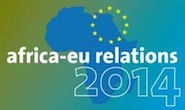This article was co-authored by Anna Knoll and Niels Keijzer (Deutsche Institut für Entwicklungspolitik (DIE). The upcoming UN High-level Dialogue on International Migration and Development. Is it not the dream of all people to have the right to move and live where they want? , Owen Barder thinks so. However Paul Collier suggests, in a short article, that people who do move for a better life incur substantial psychological costs that may broadly offset their economic gains through higher wages. He argues that migrants may become wealthier but not always happier and that tensions may ...
This article was co-authored by Brecht Lein and Niels Keijzer (Deutsche Institut für Entwicklungspolitik (DIE). The European Union is committed to policy coherence for development (PCD), and has identified global food security as one of the five key priority areas where EU policies should seek to have a positive impact or at least ‘do no harm’. But EU actors and development stakeholders seem to have difficulty in moving forward on two obviously interlinked questions – without an adequate monitoring mechanism (the “how” question) it is hard to actually prove the development-impact of the CAP (the ...
In 2003, African Heads of States launched the Comprehensive Africa Agriculture Development Programme (CAADP), as an effort to renew interest in and prioritize the continent’s agriculture agenda, as well as put food security objectives at the fore of national, regional, continental and global processes. Progress on CAADP has been reviewed every year since 2006 at the CAADP Partnership Platform meeting. During the Platform meeting, various stakeholders who contribute to, have vested interest in or are associated with the CAADP process, have an opportunity to coordinate collective and mutual responsibilities for CAADP implementation. This year, the ...
With respect to development policy, the EU’s new External Action Service is already showing cracks in its structure and it lacks the ambition to mediate competing EU policy objectives, warns ECDPM director Paul Engel. In the newest edition of Europe’s World he points out that in order to make the EEAS work for development, it should take a lead role in policymaking, promote policy coherence and ensure that development principles inform aid allocation and programming. If EEAS improves donor coordination, up to 10% of the total EU aid budget could be saved per year. But ...

















